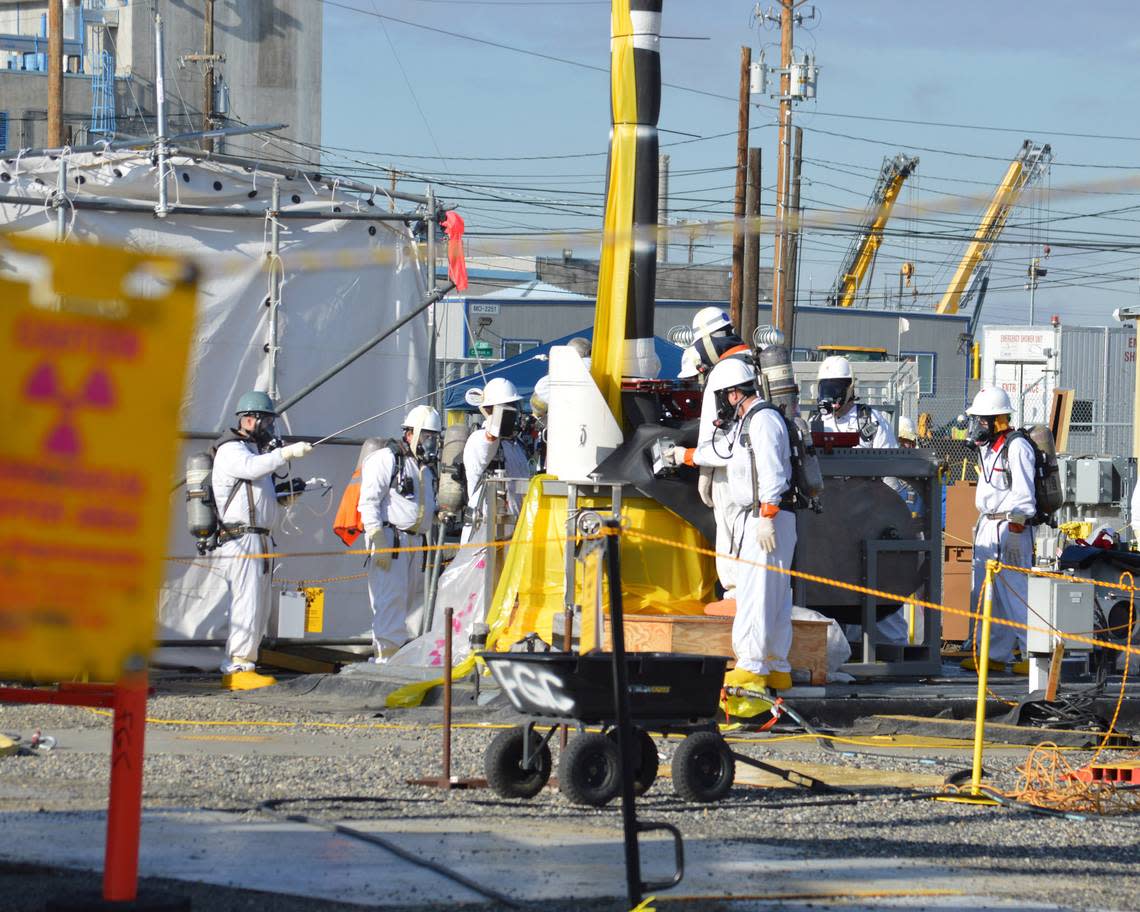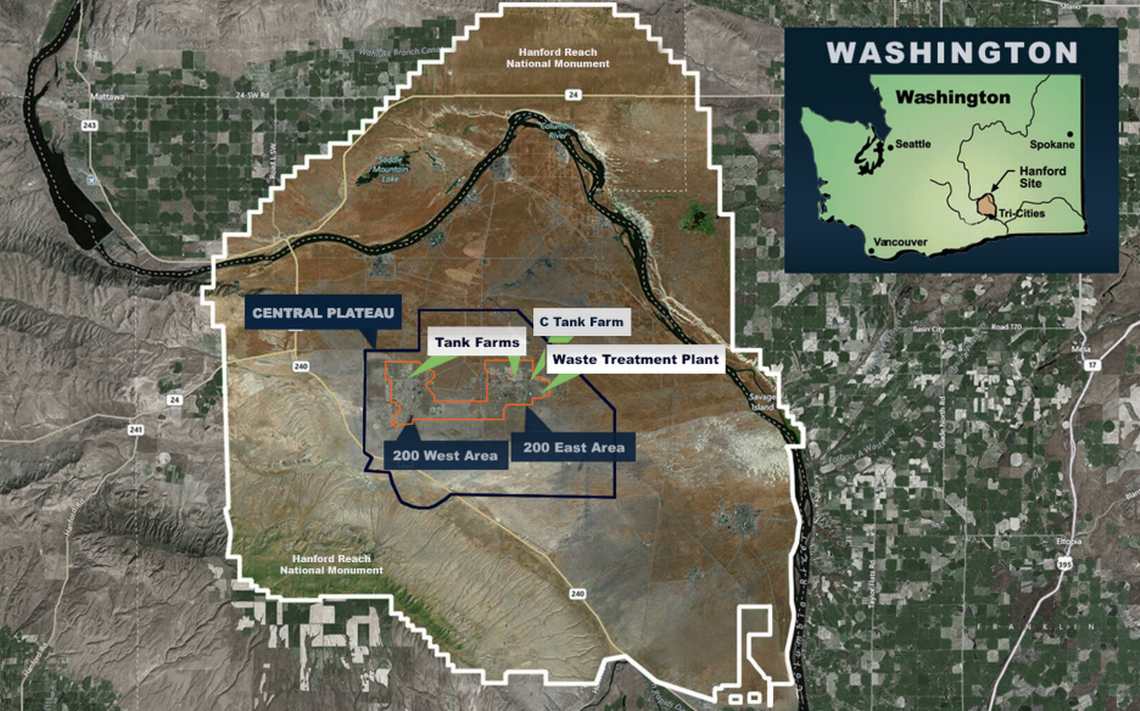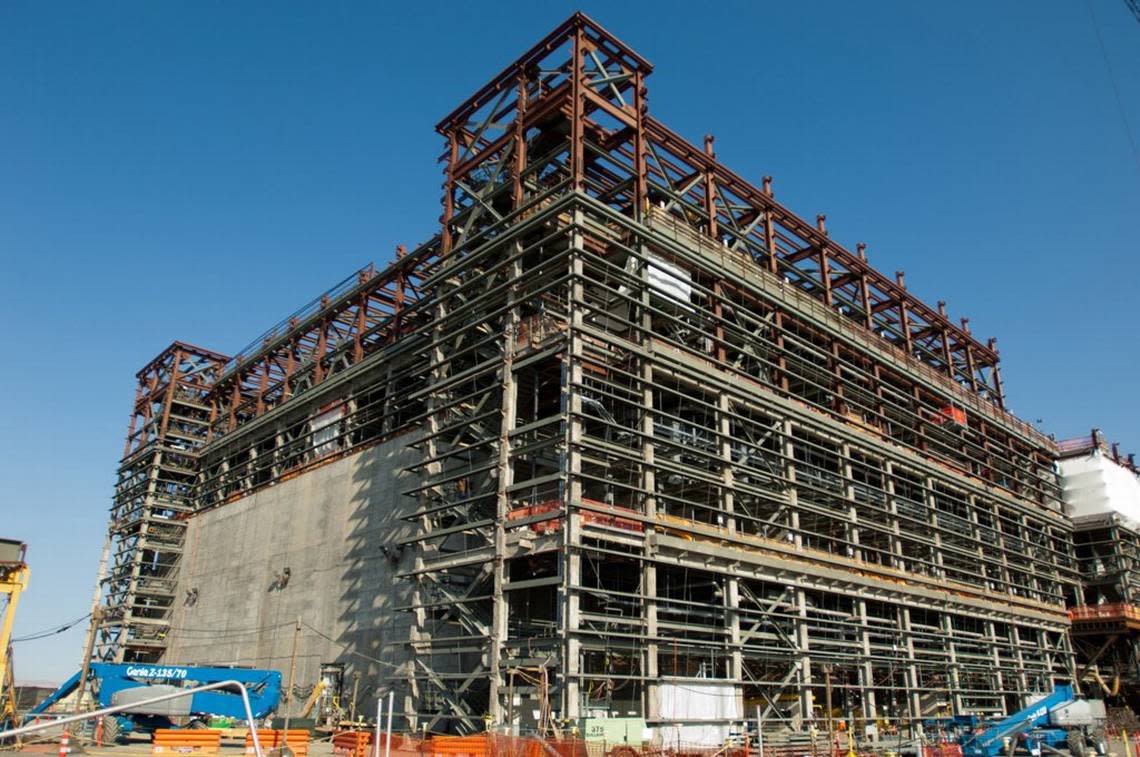WA, feds to release Hanford radioactive waste plan after 4 years of closed-door talks
Nearly four years after Washington and federal officials began renegotiating plans and treatment deadlines for 56 million gallons of radioactive waste at the Hanford nuclear site, the Department of Energy and its regulators are ready to release a new draft plan.
Since then, officials have provided limited information on plans to resolve Hanford’s largest radioactive waste troubles.
They have said they could not discuss issues being addressed in ongoing, closed-door talks between DOE and its regulators, the Washington state Department of Ecology and the U.S. Environmental Protection Agency.
On Tuesday at a Senate Energy and Natural Resources Committee hearing, Sen. Maria Cantwell, D-Wash., said that DOE and the Department of Ecology, which is the primary regulator for tank waste, plan to announce the results of the holistic negotiations within a couple of weeks.
Revised deadlines in the legally binding Tri-Party Agreement and the federal court consent decree are expected to follow.
“Obviously, we will work with the community” and make sure the outcome of the negotiations are transparent, said Energy Secretary Jennifer Granholm at the committee hearing.

The Department of Ecology proposed negotiations in June 2019 — nearly five years ago — saying that DOE was unlikely to meet major deadlines for emptying radioactive and hazardous chemical waste from leak-prone underground tanks and for treating the waste for disposal.
If Ecology and DOE could not negotiate a mutually acceptable plan, the state could take DOE back to federal court or take other enforcement action, Ecology told DOE then.
At the time Ecology proposed a “frank discussion” about challenges DOE was having in meeting legal deadlines and estimated negotiations lasting no more than six to nine months would “put us on a holistic path forward that addresses all of Hanford’s tank waste through to completion of treatment.”
It took nearly another year for negotiations to start.
The Hanford nuclear reservation at Richland in Eastern Washington was used from World War II through the Cold War to produce nearly two-thirds of the plutonium for the nation’s nuclear weapons program.
Plutonium was chemically separated from irradiated uranium fuel, leaving a mix of other radioactive materials and the chemicals as waste to be stored in 177 underground tanks.
Tank waste is a concern because aging storage tanks put the groundwater beneath them at risk of contamination with highly toxic waste. The groundwater moves toward the Columbia River about five miles away.

DOE agreed in 2019 to negotiate only if Ecology agreed not to file new lawsuits or take enforcement action on at-risk deadlines during negotiations.
It also required that DOE and the state put aside a disagreement on whether DOE should build more double-shell tanks to securely store radioactive waste that now is in leak-prone single-shell tanks.
Public comment on tank waste plan
DOE and Ecology announced a year ago, after more than 60 mediated sessions then, that it had reached a conceptual agreement on revising plans for cleanup of Hanford.
However, both the agencies and also EPA said then that they could not yet discuss the details of the agreement under the terms of the mediation.
However, the state and federal agencies said that the public will be allowed to comment on draft changes to both the court consent decree and the Tri-Party Agreement before they are changed as a result of negotiations. The consent decree changes must be approved by a federal judge.
DOE was required to start glassifying some of the least radioactive tank waste at the Hanford vitrification plant by the end of 2023, but the deadline was extended due to delays caused by the COVID pandemic. Now tank waste treatment is expected to begin in 2025.

Ecology said when it started negotiations that it did not plan to budge on key terms.
That included the start of treatment of the least radioactive waste, starting high level radioactive waste treatment by 2033 and steady progress on emptying leak-prone waste storage tanks.
Among issues that could be addressed by the negotiations is what will happen to the Hanford vitrification plant’s Pretreatment Facility.
It is unfinished, but stands 119 feet high, is wider than a football field and about 1.5 times as long.
Construction on it started more than 20 years ago to allow it to prepare high level radioactive radioactive tank waste for glassification at the vitrification plant. Construction on it halted in 2012 to address technical issues.
But advances in technology and more knowledge about the stew of waste from multiple chemical processes in the tanks could provide other options for preparing high level radioactive waste for treatment.
One alternative in a 2019 analysis proposed bypassing the unfinished Pretreatment Facility and instead using new and smaller facilities.
The negotiations also could address incorporating some of the least radioactive waste in a concrete-like grout for disposal out-of-state rather than vitrifying it for disposal at a Hanford lined landfill.
